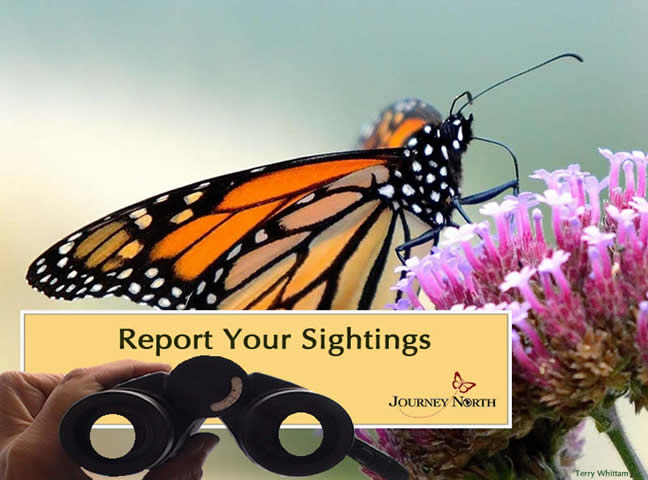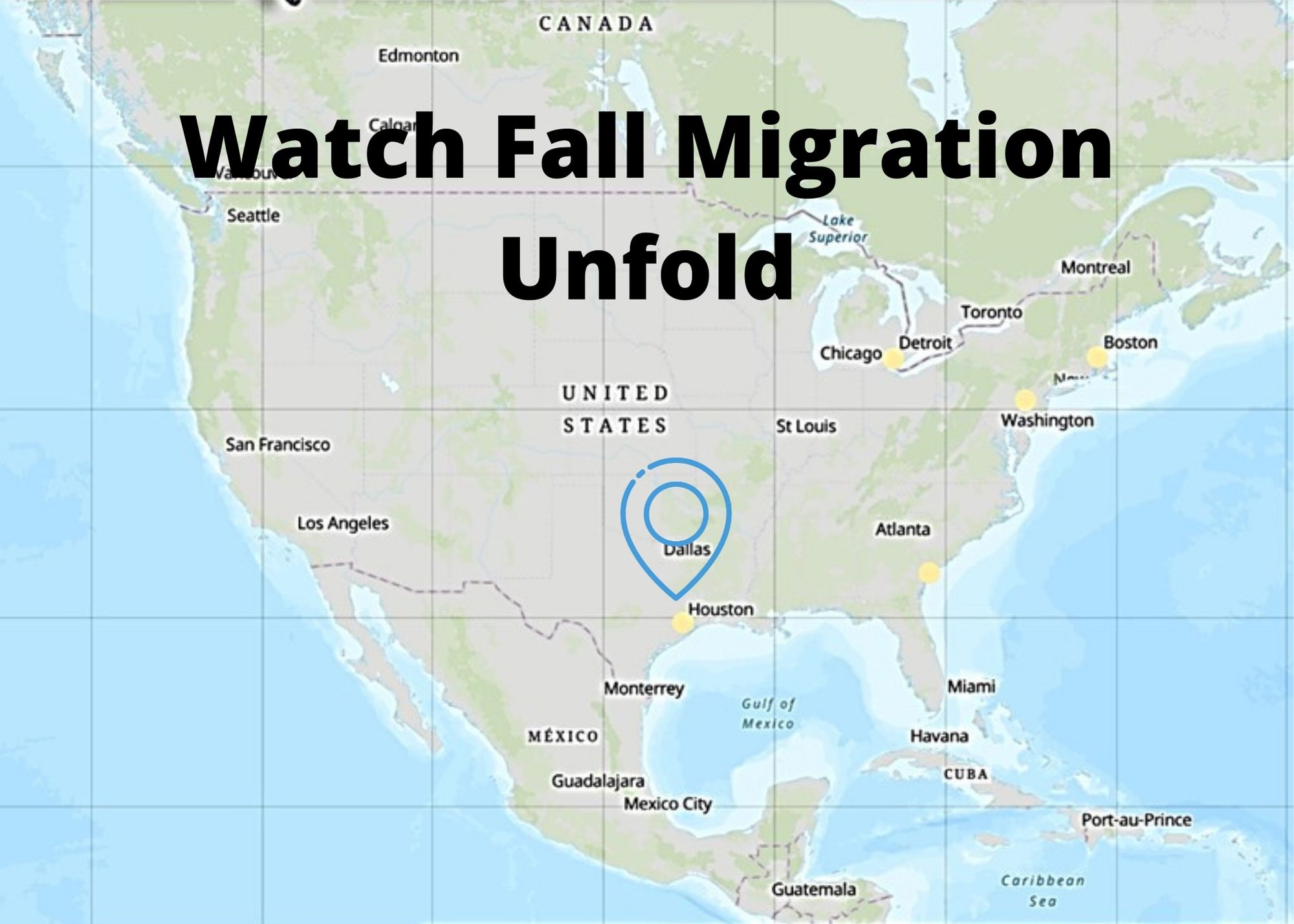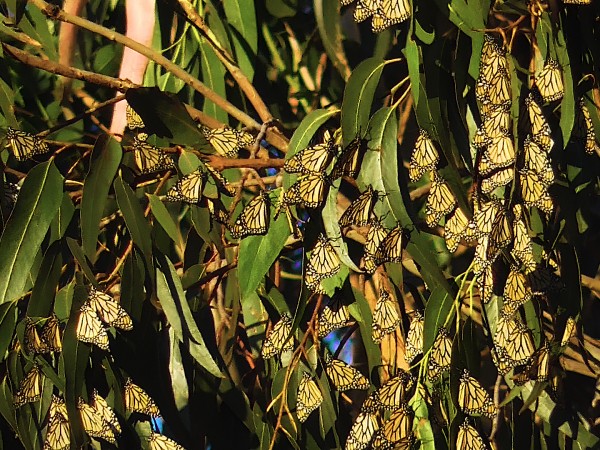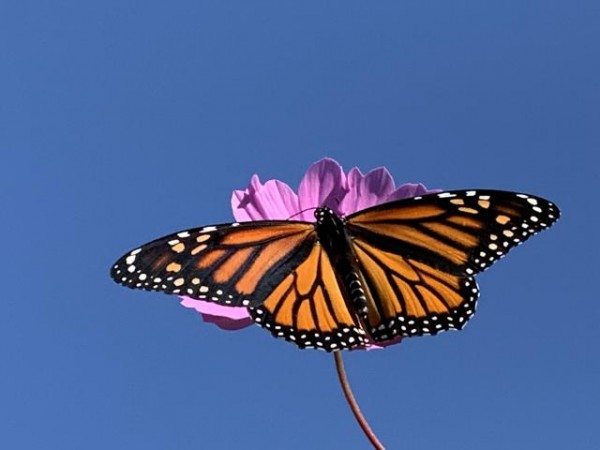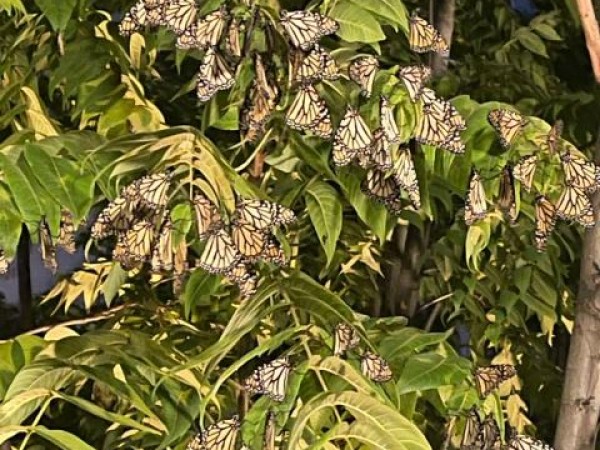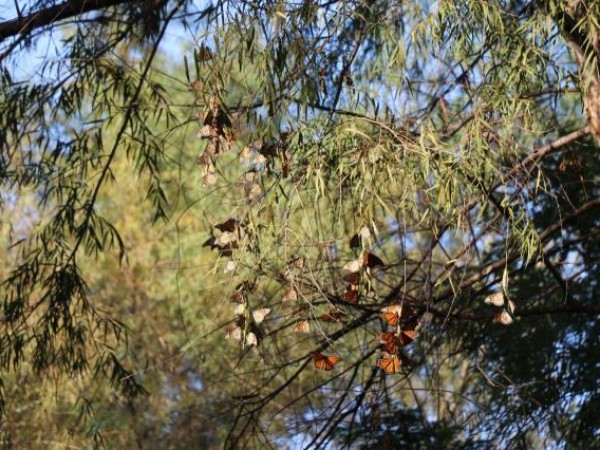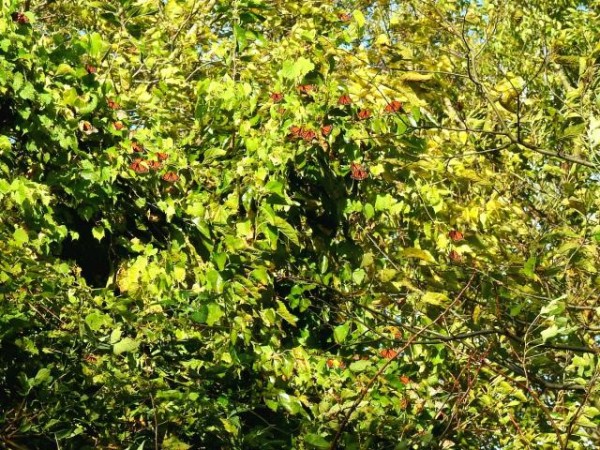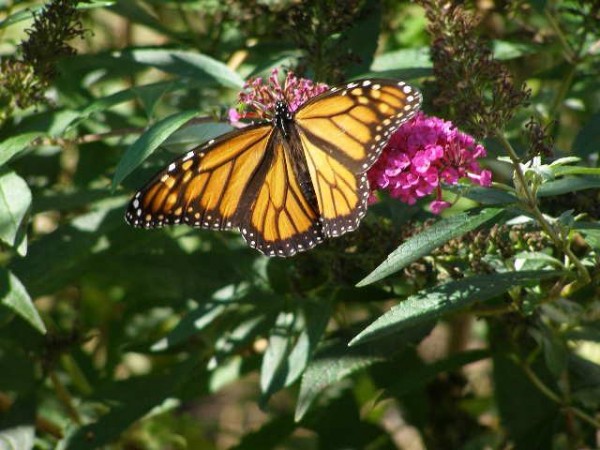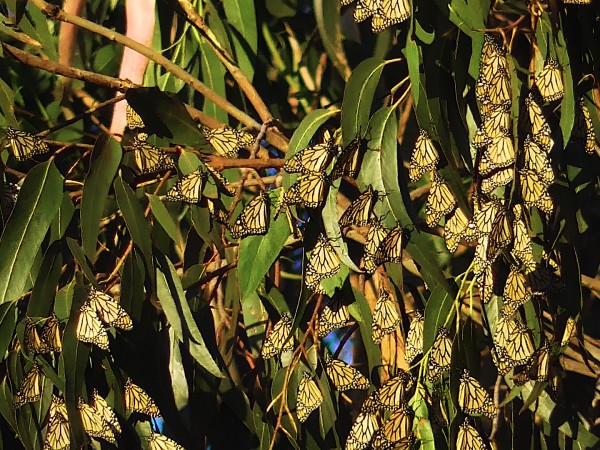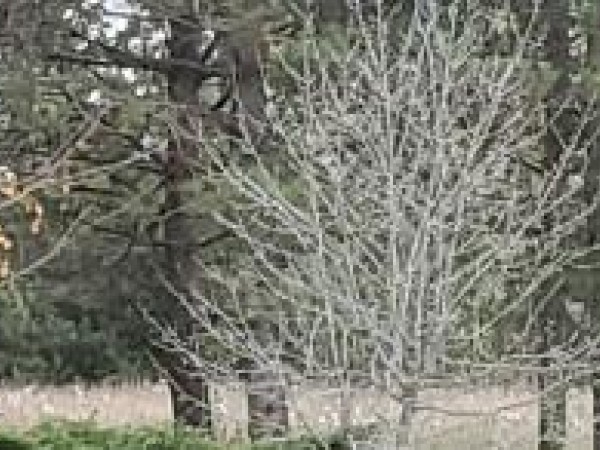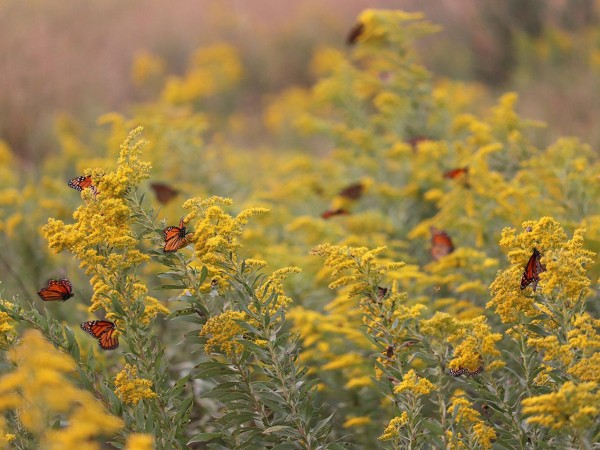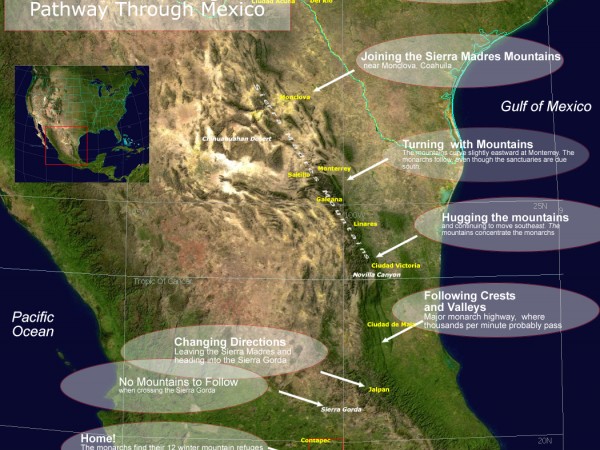Spanning North America
The Leading Edge of Migration
Arriving at overwintering sites in California
Out West, as Gail Morris highlights in her report, monarchs are beginning to arrive at coastal overwintering sites in California! Check out the photo of monarchs clustering at Pacific Grove Monarch Butterfly Sanctuary shared by Robert Parcelli. Last year, there were no monarchs reported at Pacific Grove, so this photo provides hope for the official counts in November. And some Journey North citizen scientists are seeing monarchs for the first time in a couple years!
Cynthia in Stockton, CA: "This beauty was feeding in my backyard butterfly garden for a good hour. My last sighting was 2 years ago . . . So happy to be able to report this to you!" (10/16/2021)
Numbers Increasing in Mexico
More reports of peak activity and fall roosts – courtesy of Correo Real – have come in from the Mexican states of Coahuila and Nuevo León as monarchs approach their overwintering grounds farther south. Numbers will only grow over the coming weeks.
Alejandro Belden Enkerlin in Santa Catarina, NLE: "Finally they arrived by the thousands to the pecan trees." (10/17/2021)
Elsa Hernandez in Monterrey, NLE: "Around 6:30 we saw hundreds of monarchs on huizaches and willow trees. 22°C, clear skies." (10/17/2021)
Efrain Ramirez in Saltillo, Coahuila de Zaragoza: "75 monarchs per minute starting at 3:00 p.m." (10/18/2021)
Reports of fall roosts are still coming in as far north as Ontario. And along the Eastern Flyway, monarchs are starting to make their way along the Gulf Coast.
Darlene in Leamington, ON: "A beautiful afternoon with at least 250 monarchs at the Tip at Point Pelee National Park! A sunny 16°c with strong WNW wind 31/42kmh. Overnight low 8°c. Sunset 6:44. They just kept arriving high from the east on the warm & calm east side of the Tip." (10/17/2021)
Karen in Fort Morgan, AL: "[100 monarchs] migrating east to west. I am vacationing on the beach at the Fort Morgan peninsula of Alabama. The butterflies “parade” down it from east to west along the beach and also on the 2 lane highway. This area, compared to typical beach areas, has lots of natural areas, including the Bon Secour wildlife refuge." (10/18/2021)
Eastern Monarch Population
Eastern Monarch Fall 2021 Report #6
Texas remained a hotspot of migratory activity along the Central Flyway. Fall roosts and peak activity were widely reported, and eggs and larvae were still being found as well. There were very few reports from Mexico, likely due to the effects of Hurricane Pamela which made landfall about 40 miles northwest of Mazatlán on October 13. Late-season monarchs were reported in southern Ontario, the Upper Midwest, and the Northeast. And along the Eastern Flyway, activity continued to pick up in the Southeast.
Read more of the Eastern Monarch Fall 2021 Report #6»
Western Monarch Population
Letter from Gail Morris: Western Monarch Fall 2021 Report #6
A major cold front and winter storm roared through the West this week bringing near record-breaking low temperatures and the first snow of the season all the way south through the central Arizona highlands. How will this affect monarchs still on the way on their Fall migration? Your reports will help us find out! But for this week there is good news: Monarchs are beginning to arrive at the coastal overwintering sites in California and larger numbers of monarchs are now reported as the migration gathers monarchs along the way.
Read more of Gail Morris' Letter: Western Monarch Fall 2021 Report #6»
Harvesting Milkweed Seed
If you live in a more southerly location, there may still be time to harvest milkweed seed. Loss of milkweed is a leading factor contributing to the decline of monarch butterflies. We need all hands on deck to plant more milkweed. Harvesting milkweed seed is all about timing. Learn more about collecting and harvesting methods in this helpful article from the Xerces Society. And during fall migration, it's just monarchs on the move – Journey North citizen scientists are also noting flying milkweed seed!
James in Gulliver, MI: "Milkweed seeds have been flying heavily especially the past few days as precipitation has waned. This afternoon it's heaviest so far and almost looks like snow squalls, with windy NW breeze, gusts and air thick with those puffy white seeds in mostly sunny skies." (10/17/2021)
Reminder about Reporting Fall Roosts and Peak Migration
There have been questions about what information to share when reporting monarch peak migration events and fall roosts. Below is a review of the protocols for those categories.
- Monarch PEAK Migration – People often report seeing large numbers of monarchs flying in a clear “directional” flight, or seeing “hundreds of butterflies” nectaring in a field of flowers fueling up for the long flight. If you witness what seems to be a large number of monarchs for your area (i.e. dozens, hundreds), please report this observation under PEAK Migration. For reported numbers to be meaningful, please let us know the length of time you spent counting monarchs.
- Monarch Fall Roost – Migrating monarchs cluster together in trees at night, forming what is called a roost. A roost may have a handful of butterflies or more than you can count. Fall roost reports should reflect the number of monarchs observed within a roost for a single night. In your comments, let us know when the roost formed, how you estimated the number of monarchs roosting, and other information (such as nearby nectar sources, species of tree(s) in roost, and whether the monarchs are shielded from the wind in their location).
If you’re still observing monarch activity, keep reporting. Your observations contribute to our collective understanding of monarch migration. Thanks for all you do!


